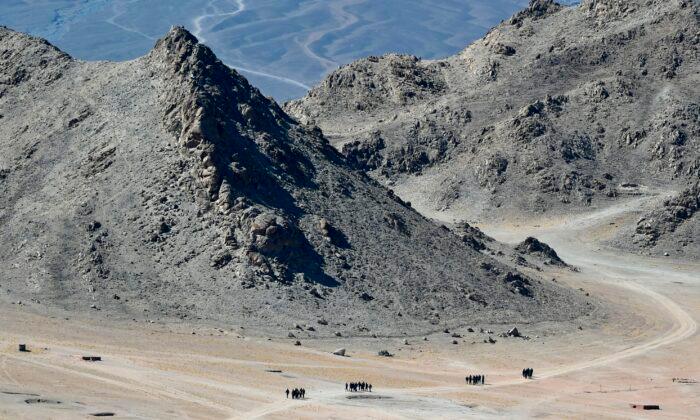The Indian government said that it “preempted” the movement of China’s People’s Liberation Army along the Pangong Tso Lake in the Ladakh region of the Himalayas and prevented Beijing from violating the agreed-upon border between the two countries, during a new standoff.
While the Chinese side blamed Indian troops for violating the border agreements and for escalating tensions overnight on Aug. 29–30, India’s defense ministry pointed to the PLA’s “provocative military movements.”
Indian Army Col. Aman Anand said in an Aug. 31 defense ministry statement, “PLA troops violated the previous consensus arrived at during military and diplomatic engagements during the ongoing standoff in Eastern Ladakh and carried out provocative military movements to change the status quo.”
India and China have been locked in a conflict that started with fresh face-offs between the two militaries in May. While each side has accused the other of violating perceptions of the disputed territory called the Line of Actual Control (LAC), the conflict took a bloody turn in Galwan on June 15.
In that incident, 20 Indian soldiers and an unknown number of Chinese soldiers were killed in Galwan in a hand-to-hand clash, in which Indians accused the PLA of using medieval-style weapons such as nail-studded clubs.
“Indian troops preempted this PLA activity on the southern bank of Pangong Tso Lake, undertook measures to strengthen our positions and thwart Chinese intentions to unilaterally change facts on the ground,” Anand said about the latest occurrence.

In multiple official statements since Aug. 31, Beijing has accused the Indian side of illegal trespassing and provocative behavior at the site of the activity.
The border dispute goes back to the 1950s because of the absence of an international boundary between the two countries. The neighbors share over 2,500 miles of border after China annexed Tibet in 1949 and later had various agreements to normalize the LAC, the disputed western boundary.
Former Deputy Chief of Army Lt. Gen. Gurmeet Singh told The Epoch Times by telephone that India wants China to maintain the status quo that existed on May 5.
“The Chinese, in the last talk, had said that, based on the mutual consensus and having discussed all the friction points on the eastern Ladakh, they suggested that mutual and equal disengagement should be done. ... The Indian side had told them categorically, that [it] would require complete disengagement and restoration of status quo as on the 5th of May 2020,” Singh said, adding that a delay in the talks has resulted in tension.
Singh said that on Aug. 29 at around 11 p.m. local time, the Indian army detected some activity on the Chinese side, and being on “high alert” since June 15, it took preventative measures. He said the Indian side also had “intelligence” about it.

Rong said China is “resolutely opposed” to what he termed as India having grossly violated “China’s territorial sovereignty, seriously violated relevant agreements, protocols and important consensus reached between the two countries, and severely damaged peace and tranquility along the China-India border areas.”
“China has made solemn representations to the Indian side, urged the Indian side to strictly control and restrain its frontline troops, earnestly honor its commitments, immediately stop all the provocative actions, immediately withdraw its troops illegally trespassing the Line of Actual Control, and immediately stop any actions leading to the escalation and complication of the situation,” Rong said.
Meanwhile, James Carafano, a national security and foreign policy expert at the Washington-based Heritage Foundation, told The Epoch Times over the phone that he doesn’t expect the situation to escalate into a full-fledged war.
“For the simple reason is neither side really has anything to gain through the tension,” he said.
“India has no interest or benefits from a more escalatory situation with China. So I don’t think that this is where the two governments are going to really be looking to, to push this very far.”





